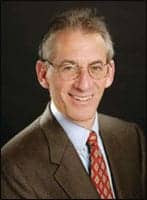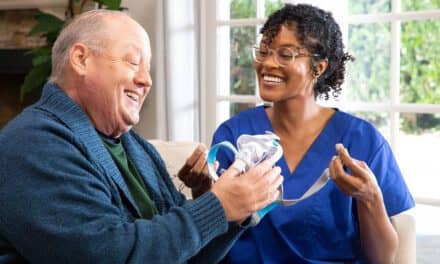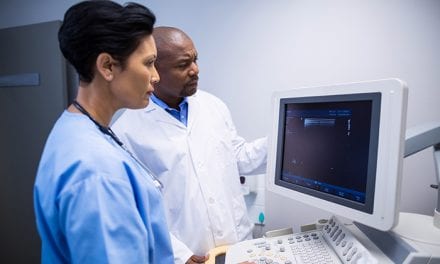 |
In the years ahead as health care reform invades, infects, or inspires (take your pick) the medical community toward new models of practice, sleep medicine physicians and technologists must discover innovative treatment pathways. Currently, the most widely used sequence begins with a patient-physician clinic appointment to assess sleep complaints and develop a plan, which typically moves through testing in the sleep lab to long-term use of positive airway pressure therapy (PAP-T).
How effective is this system? Not so impressive judging by PAP-T adherence rates often hovering above 50%.
When I started in clinical sleep medicine 16 years ago, the conventional wisdom declared that treatment adherence was often limited by the inability of the sleep apnea patient to conceptualize the disease process. Because patients slept through sleep apnea, they could not appreciate the pathophysiology of a sleep breathing problem, or if they did accept the diagnosis, they could not embrace the notion of wearing a mask while asleep. For these reasons, my patient-physician encounters included a motivational interviewing technique (think Socrates with a bit more give and take).
Ideally, this method raises enough questions that a patient’s answers eventually spell out all the necessary information about sleep apnea; however, because the ideas emerge from the patient’s mouth in their own words, retention is greater. To enhance the presentation, we used wall illustrations to aid the patient in picturing the process. Also, patients handled masks, or, for anxious patients, our sleep techs provided a tour of the lab.
By the end of the appointments, I was convinced (always a risky maneuver) that our patients realized the “breath-taking” nature of their sleep problems, the need for further work-up, and the value of a breathing mask to resolve or improve the problem. Nearly all patients reported they understood the process and wished to move forward with testing, but then a few weeks later a funny thing happened on the way to the lab. They forgot most of what was discussed in the clinic. I discovered this phenomenon by having sleep techs report back to me on their interactions with patients on the night of testing. I was perplexed and rudely awakened by the facts on the ground—patients simply were not retaining the extensive information discussed in the clinic because they had waited too long to hold on to their insights, or their insights were superficially constructed on an intellectual foundation instead of an experiential one. Even when shown videos in the sleep lab about SDB and PAP-T the evening of the first test, they were still not absorbing the information.
We first thought to test the patient the night after the clinic appointment but gave it no second thoughts due to the impracticalities of scheduling. Then, I asked other sleep doctors and sleep labs about their experiences on this issue and learned about their own frustrations, but few solutions were offered. I put my imagery skills to a test trying to picture what might be the problem and its solution; I arrived at what I believed at the time and still believe to be the single most important rate limiting factor in the communication between doctors and sleep apnea patients—cognitive impairment!
The patients were not retaining the information likely because of the impact of sleep apnea on brain function. I believed that the sleep fragmentation and oxygen desaturations were causing deficits in executive function, notably in areas of concentration, memory, and attention span. So, we changed our model to an experiential one in which the new information would be more dynamically ingrained into the patient, not through words alone but through words and experiences.
ENHANCING THE PATIENT’S ABILITY TO REMEMBER INFORMATION
In 2003, we organized our new sleep medical center, Maimonides Sleep Arts & Sciences to achieve these goals by first creating an electronic patient portal with an extensive battery of questionnaires to streamline the communication between patient and doctor before arrival at our center. Then, we developed a screening system to coordinate patient testing soon thereafter but prior to a clinic appointment. Finally, the third and ultimate key to the program was to train our sleep technologists to review pertinent impressions from the overnight testing (without providing a diagnosis) that very morning after the test. Our goal has been to create an experience more likely to help patients believe and remember what they see. Routinely, our techs spend 15 to 30 minutes pointing out information on the computer screen, proving time and again that a picture is worth a thousand words.
Our sleep techs are also trained to engage patients to accurately measure their motivation to proceed with treatment with either a PAP-T titration or a clinic appointment. Overall, we create a dynamic in which the patient develops a clear impression that the first full night of sleep testing is a very productive step. On the way out the door, the picture in the patient’s mind is as simple as: “on the computer, they showed me where I stopped breathing,” a most memorable piece of information. The final step within a few days or a week is a phone call in which the patient learns the final diagnoses and recommendations from the physician.
To our surprise, greater than 90% of patients show an eagerness to return to the sleep lab for the titration test instead of requesting a clinic appointment. In a minority of cases, patients complete a split night test on the first night and then report an eagerness to initiate PAP-T. The clinic appointment is then scheduled 1 to 3 months later.
In our view, this program enlists our patients as more active participants by requiring their use of the electronic portal, scheduling only those willing to start in the lab, and then following up with an intensive interview in the morning after the test to review the experiences and key data. We’re finding that patients show a great deal more initiative in the early phases of treatment compared to other systems we tried previously. Patients compliment us on the system for other reasons as well: it saves time, travel, and money; and they frequently report great satisfaction in having filled in nearly all their “paperwork” before arrival at the sleep center.
 |
Check the online archives for more articles by Barry Krakow, MD. |
Additional programs on our Web site allow patients to report PAP-T progress on a nightly, weekly, or monthly basis, and we can respond with electronic or telephone feedback every step of the way. The patients can also write up a “ticket” for problem resolution and ask for urgent, same day, or next day service provided by appropriate staff at our center. When patients arrive for their clinic appointments, we have been impressed with their sharper focus and clear-cut motivation to fine-tune PAP-T usage.
For our sleep medical center, the electronic patient portal is a great asset in developing a patient-centered medical home for our sleep patients. We envision unlimited possibilities in the use of the portal to enhance the education of our patients and their communications with the sleep doctor and support staff.
Barry Krakow, MD, is the author of Sound Sleep, Sound Mind, principal investigator at Sleep & Human Health Institute, and medical director at Maimonides Sleep Arts & Sciences Ltd (www.sleeptreatment.com), and blogs at www.sleepdynamictherapy.com. He can be reached at [email protected].





